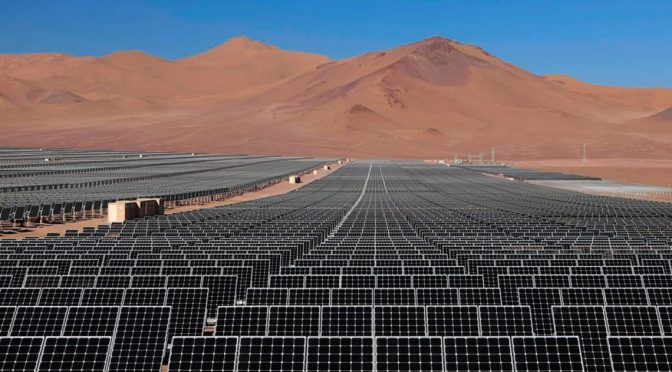Argentina has taken another step towards the future of renewable energy. All thanks to the inauguration of the largest photovoltaic plant in South America. Located in the Puna of Jujuy, the Cauchari plant has been equipped with more than 900 thousand solar panels that will occupy 600 hectares in the town of Susques, about 4200 meters above sea level.
This project will not only provide clean energy, it will also generate local employment, contributing to the economic development of the region. Everything fills, everything contributes.
More than 900 thousand solar panels installed in the Puna of Jujuy
The Cauchari solar plant project has been developed over several years, with a considerable investment from international loans and the support of the Argentine government. The plant consists of 3 stations: Cauchari I, II and III, all operating to inject energy into the national interconnected system.
The Jujuy sun, known for being one of the most powerful sources of radiation in the world, will be captured by these panels to generate 300 megawatts of clean energy.
An achievement that transforms Jujuy’s energy matrix towards sustainability
Located in an area with one of the highest solar radiations on the planet, the Cauchari solar plant will not only supply more than 100,000 homes with clean energy, but also has the potential to generate no less than 25 million dollars a year in income for the province of Jujuy.
This project is part of a radical change in the province’s energy matrix, moving away from the exclusive use of fossil fuels and moving towards a renewable and self-sustaining energy model.
Social and economic impact: job creation and training of local specialists
The construction of the Cauchari plant has required the participation of more than 1,200 local workers, heroes who have worked in extreme conditions due to the altitude and climate of the area.
This project has allowed the specialization of the local workforce in the installation and maintenance of solar panels
Injection of renewable energy into the Argentine Interconnection System
The commercial operation of the solar plant is scheduled for the end of this year, when it is connected to the Argentine Interconnection System. This connection will allow the energy generated at the Cauchari plant to be distributed throughout the country, contributing to a decrease in Argentina’s dependence on fossil fuels.
In addition, the 300 megawatts of energy that the solar plant will generate will be sold to the Wholesale Electricity Market Management Company, which will generate a sustained source of income for the province.
Future projections: expansion of the capacity of the Cauchari plant
The Cauchari plant will not stop at the current 300 megawatts. Thanks to additional funding of $300 million, the plant’s capacity is projected to be expanded to 500 megawatts in the coming years, which would increase its impact on the supply of energy of this nature in Argentina.
This project is also part of a much larger program, which includes the construction of eight additional solar plants in Jujuy, with a total capacity of 48 megawatts, which will consolidate the province as one of the main generators of clean energy in the country.
A key project in the advancement of solar energy in Argentina
The Cauchari photovoltaic plant represents an achievement for Argentina and all of South America. This project will not only generate a significant amount of renewable energy, but will also create jobs and provide substantial income to the province of Jujuy.
With the start-up of this Argentine plant, it is one step closer to a more sustainable future, aligned with clean energy and decarbonization commitments worldwide.
